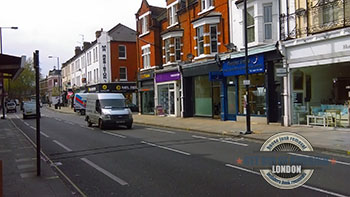When it comes to the question of which is the best part of London, opinions turn out to be pretty divided. Many claim that North London, being historically older and better developed than the South, is the place to be. For others, nothing outside the closed circuit of Central London does not count as a part of the capital. What we are certain about however is the fact that West London is in no way worse than your views on what your place of residence should look like. Even more – West London is in many respects better than any other part of the present day metropolitan area.
West London by definition
According to the London Plan, West London is a sub-region of the metropolitan area of Greater London that lies geographically to the West of the City. The boroughs that are considered to be part of the West London area include:
- Brent
- Ealing
- Hammersmith
 and Fulham
and Fulham - Harrow
- Hillingdon
- Hounslow
- Richmond upon Thames
According to the statistics that are available at the current moment, West London accounts for some 20 per cent of the Gross Value Added that has been recorded for London in the past several years, e.g. somewhere around the astounding 34.4 billion Pound Sterling. One should not miss the fact that the London Heathrow Airport is located on the territory of West London. In addition to being a major transport hub not only for the capital, but also for the whole world, Heathrow is also a very important employer in the area. West London has a rather significant student population as well, mainly due to the University of West London, which has 20 000 students.
West London – descriptions of several key areas here
West London contains within its territory some of the finest residential, cultural and entertainment centers in London at the present moment, including but not limited to:
West Kensington is primarily residential in character. The majority of the housing developments here are represented by terraced Victorian and Edwardian houses that are both beautiful and practical in nature. There are whole streets in West Kensington that present Victorian architecture at its best. Both young professionals looking for luxury flats and families looking for old-fashioned housing are welcome in West Kensington. Thanks to its very central location West Kensington is also pretty attractive to tourists, due to several notable local landmarks such as Olympia Exhibition Centre and the Queen’s Club at Barons Court.
Teddington is one of the most famous towns in Greater London. Located in Richmond upon Thames, Teddington is an affluent place that is located on the north bank of the Thames. The charm of Teddington lies in the fact that there are no high rise developments to litter the landscape here. In addition to being home to many people, Teddington is an important shopping centre for West London, mainly when it comes to independent shops of various nature.
When looking for a place as far away from the hassle and stress of the City, while you still need a high degree of comfort, then Hampton is the right choice for you. Hampton is on the border of Greater London, on the north bank of the Thames and has great transport connections to Central London, as well as other parts of the capital. The area is even served by two railway stations: Fulwell railway station and Hampton Wick railway station. Hampton is an exemplary suburban development and offers a number of attractions as well, such as the traditional Shakespeare exhibition in Garrick’s Temple, which is held for free every Sunday from April until October.
 Ealing as a borough has a very long and interesting history, but the district that goes by the name of West Ealing itself has been developed in the last century. If you are looking for a modern suburb with shopping amenities and good connections to Central London, West Ealing may very well be the place for you. The place is serviced by the following railway stations – Castle Bar Station, Drayton Green Station, and West Ealing Station, all of which are managed by Great Western Railway.
Ealing as a borough has a very long and interesting history, but the district that goes by the name of West Ealing itself has been developed in the last century. If you are looking for a modern suburb with shopping amenities and good connections to Central London, West Ealing may very well be the place for you. The place is serviced by the following railway stations – Castle Bar Station, Drayton Green Station, and West Ealing Station, all of which are managed by Great Western Railway.
Many districts in modern day Greater London have been developed from villages that used to be in the perimeter of the capital in previous centuries. Longford is a good example of it. The history of the settlement can be traced back to the 5th century AD at least. Today it is home to the Longford Village Conservation Area, much of which is within the Metropolitan Greenbelt. Many old buildings are to be found here as well. Longford Cottage, Queen River Cottage and adjoining Willow Tree Cottage are interesting Grade II listed buildings that are on the premises of Longford Village.
Hatton is a relatively small and seemingly isolated area in the borough of Hounslow (with some parts administratively within Hillingdon). Historically it was just a small village, but subsequently it was built up as a result of the expansion of suburban London. Some people consider the area to be pretty noisy due to the proximity of the London Heathrow Airport, but in actuality things are not as bad as they describe it. Most of the housing consists of detached and semi-detached terraced houses from the 1930s.
Brentford was known for the Brentford Dock, which is no longer operational. The area is home to a number of pretty notable businesses such as the Allianz Cornhill Animal Health, Kraft Foods International, SEGA Europe and Tie Rack Corporate Neckwear among others. Local landmarks include the Syon Estate, which is the London residence of the Duke of Northumberland as well as the Brentford Monument, which was erected in 1909 in order to commemorate a number of major events in the long and interesting history of the town, the first of which was the crossing of the Thames by Julius Caeser, which is supposed to have happened in 54 BC.
